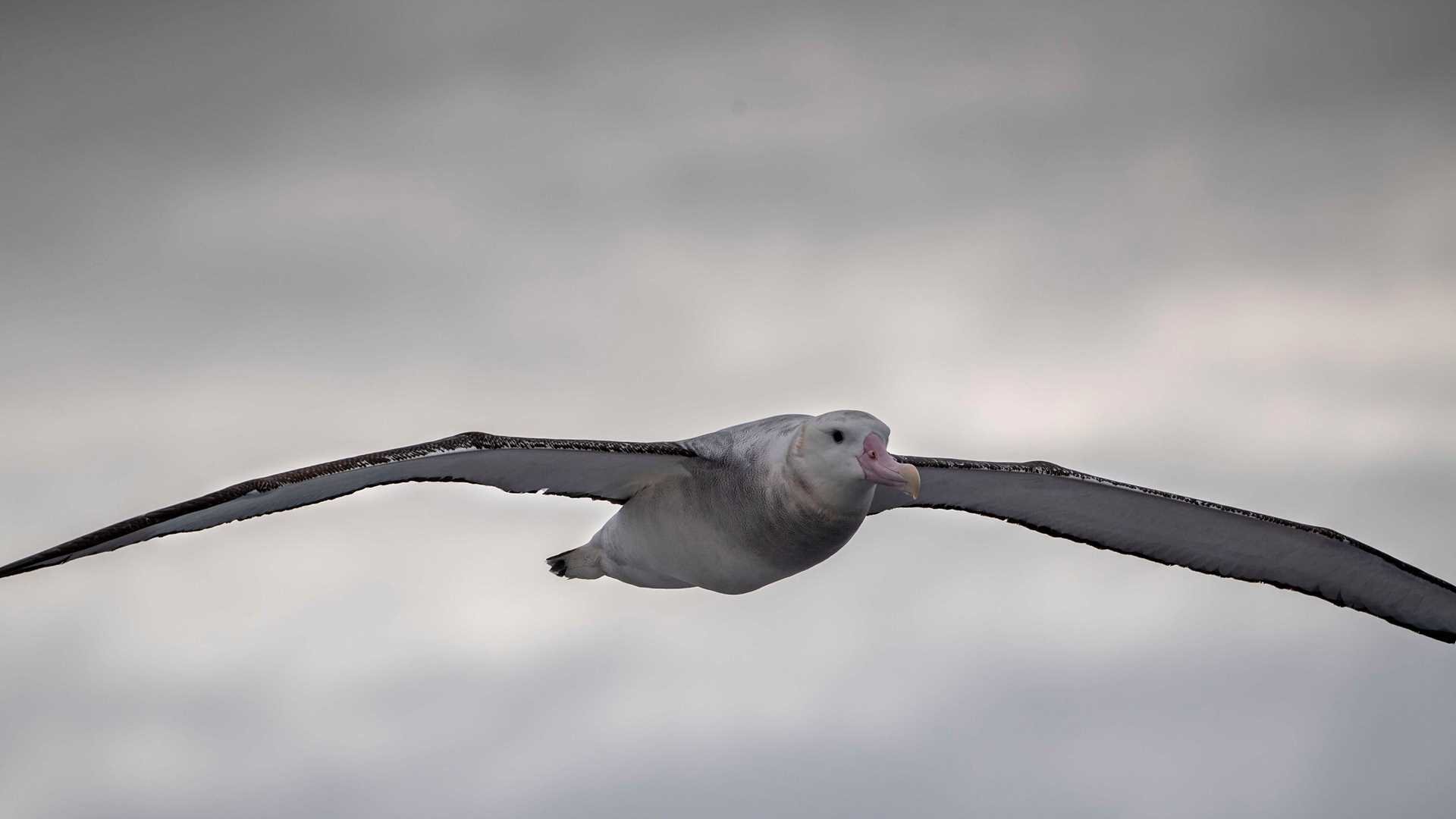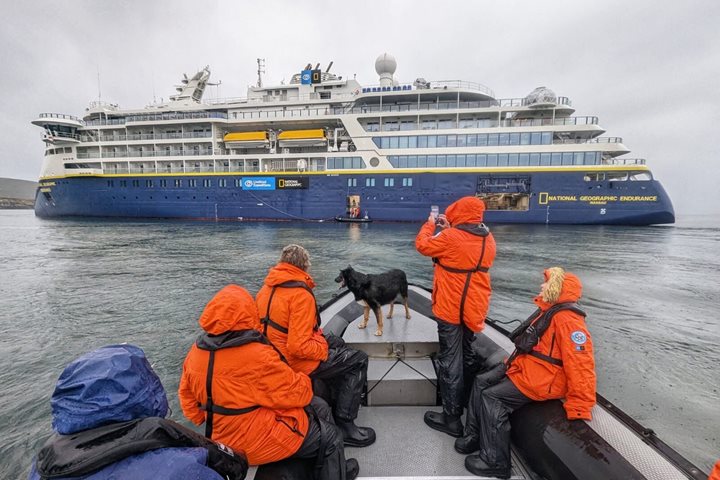Days at sea are so splendid, and the very good sea conditions continued to accompany us!
There was a time change last night, but that didn’t thwart the serious birders among us—quite a few of us were up on the Bridge well before 6 a.m. We were rewarded with a good number of seabirds, easily picked up in the lovely morning colors. We were even rewarded with some fur seals and king penguins.
During the morning, more presentations gave us more information on South Georgia as well as tools to better capture the images that will tell our story when we get back home.
Increasingly good news greeted us in the form of whale sightings, most identified as fin whales, the second largest animal on the planet. Later on, we came upon a pod of beaked whales that had surfaced before heading down again on one of their characteristic long dives.
The early afternoon started with a bang as killer whale sightings were announced over the public address system. Everybody abandoned whatever they were doing; grabbed jackets, cameras, binoculars, gloves, and hats, and headed for one of the many vantage points on National Geographic Explorer. For the next hour or so we were treated to one of those memorable experiences that will long remain with us: a family group of around 13 type-A killer whales. Many seabirds flew over them, particularly Wilson’s and black-bellied storm petrels, constantly feeding. This led our team of naturalists to think that the killer whales might have been feeding on a submerged kill.
We spent the rest of the afternoon attending the biosecurity presentation, which outlined how we were to proceed when going ashore in South Georgia. This was followed with a decontamination procedure (party) down in the mudroom.
Those of us who ventured up to the Bridge one more time witnessed a wonderful spectacle: wandering albatross and light-mantled albatross, including two old wanderers.
During the early part of the day we steadily crossed the polar front into the biological world of Antarctica, evident by the markedly colder air temperatures—and by the end of the day the sea temperatures were a chilly 2°C. Completely circumventing the planet, this enormous boundary demarcates the Southern Ocean from the neighboring Atlantic, Indian, and Pacific Oceans.
While enjoying dinner aboard, a dense fog surrounded the ship as we approached the Shag Rocks, the visible part of a rise in the Scotia Sea around this part of the vast Southern Ocean.









